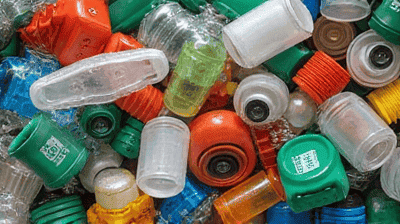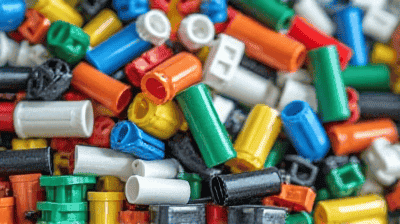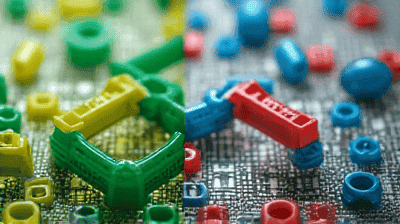
Plastic waste has become one of the most pressing environmental issues of our time. With billions of tons of plastic produced each year and only a fraction of it being recycled, the consequences of plastic pollution are dire. The two primary methods of recycling plastic, chemical recycling and mechanical recycling, have gained prominence as potential solutions to this crisis. Each method has its own advantages, challenges, and implications for the future of plastic waste management.
Plastic waste is a global challenge that affects ecosystems, wildlife, and human health. Approximately 300 million tons of plastic are produced annually, with a significant portion ending up in landfills, oceans, and natural habitats. The lifespan of plastic materials can extend hundreds of years, leading to the accumulation of waste that poses severe environmental threats.
Despite efforts to promote recycling, plastic recycling rates remain alarmingly low. According to the Environmental Protection Agency (EPA), only about 9% of plastic waste is recycled, while 12% is incinerated, and the remaining 79% ends up in landfills or the environment. This statistic underscores the urgency for more effective and scalable recycling solutions.

Mechanical recycling is the most common form of plastic recycling. In this process, plastics are physically shredded, melted, and reformed into new products. It generally involves several key steps:
Chemical recycling, also known as advanced recycling or depolymerization, refers to processes that break down plastics into their chemical building blocks. Unlike mechanical recycling, which reprocesses plastic materials mechanically, chemical recycling involves breaking down polymers using chemical reactions, allowing for the recovery of monomers and other feedstocks. The key steps typically include:
When considering the future of plastic waste management, it is essential to compare the advantages and limitations of chemical and mechanical recycling. Here are some key factors to consider:
Mechanical recycling often results in lower quality recycled plastics due to degradation and contamination, whereas chemical recycling can preserve material quality and produce materials equivalent to virgin plastics. This factor is crucial for sectors that require high-performance plastics.
Mechanical recycling is limited to certain plastic resins, while chemical recycling can potentially handle a wider array of materials. This versatility makes chemical recycling an attractive option, especially for complex waste streams with mixed plastics.
Currently, mechanical recycling is more established with existing infrastructure and lower costs. Chemical recycling processes are still in the development phase, and the economic feasibility is often questioned. However, advances in technology and rising plastic waste concerns may shift this balance in the future.
The overall environmental impact of both methods depends on factors such as energy consumption, emissions, and waste generation. Although chemical recycling has the potential to produce higher-quality resins, the energy requirements and possible emissions need careful evaluation.
Mechanical recycling has a proven track record and wide adoption across various sectors. In contrast, chemical recycling is still emerging, and its acceptance will depend on technological advancements and regulatory support.

The future of plastic waste management may not rely solely on one recycling approach. A combination of both mechanical and chemical recycling could offer a more comprehensive solution to the plastic problem. Each method’s strengths can be leveraged to manage different types of plastic waste effectively.
Complementary Roles: Mechanical recycling can continue to play a critical role in recycling well-established plastics like PET and HDPE, while chemical recycling can tackle complex waste streams that mechanical processes cannot efficiently treat.
Hybrid Systems: Some companies are exploring hybrid systems that incorporate both recycling methods to maximize material recovery and minimize waste. These systems can effectively address a variety of plastic materials and improve overall recycling rates.
The success of both recycling methods will depend on supportive policies and regulations. Governments can play an essential role in promoting recycling through several actions:
Funding and Incentives: Providing financial support for recycling innovations, including investment in research and development for chemical recycling technologies, can accelerate advancements and adoption.
Standards and Guidelines: Establishing clear standards for recycled materials and guiding recycling practices can help ensure quality and safety, bolstering consumer and industry confidence in recycled products.
Awareness Campaigns: Public education campaigns to inform consumers about recycling practices and the importance of reducing plastic consumption can help cultivate a culture of sustainability.
Consumer choices and behavior significantly impact plastic waste generation and recycling practices. Raising awareness about plastics and encouraging responsible consumption will be essential in addressing the plastic problem. Strategies include:
Encouraging Reduction: Promoting practices such as reducing single-use plastics and opting for reusable products can minimize plastic waste generation in the first place.
Understanding Recycling Labels: Educating consumers about recycling symbols and labels can help ensure proper disposal practices and support the efficiency of recycling systems.
Investments in research to develop new materials and alternatives to conventional plastics will influence the future of plastic waste management. By focusing on sustainable materials, industries can pivot away from reliance on petrochemical plastics.
Bioplastics: Developing bio-based alternatives that can be easily recycled or composted offers exciting prospects for addressing plastic waste challenges.
Enhanced Degradation Technologies: Research into additives that promote biodegradation in conventional plastics can mitigate pollution while maintaining utility.
Navigating the complex landscape of plastic waste management requires a multifaceted approach that leverages the strengths of both chemical and mechanical recycling. As the world grapples with the consequences of plastic pollution, it is essential to assess not only the effectiveness of existing recycling methods but also to innovate and invest in future solutions.
By integrating recycling strategies, supporting technological advancements, and fostering consumer responsibility, we can create a more sustainable future for plastic waste. The combined efforts of governments, industries, and individuals will be critical in shifting toward a circular economy, reducing plastic waste generation, and protecting the planet for generations to come.